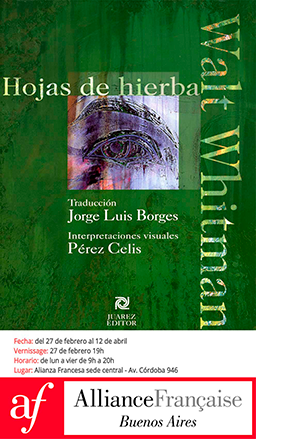THE URGENT BESTIARY OF ROBERT NAVA
Standing before the expressive forcefulness of Mexican-American Robert Nava (East Chicago, USA, 1985) can be risky. At first glance, the primitivism in the technique used in his canvases is shocking in the conversion of the strength of the stroke and the basics of the gesture into a language that agglutinates a brute force. Perhaps for that reason, the usual tendency of those who face his work is to quickly pigeonhole it out of the academic, out of that refinement that is presupposed -although less and less- to those who fill the room of a museum, to let themselves be carried away by the urgency of expression in front of that pretended good taste.
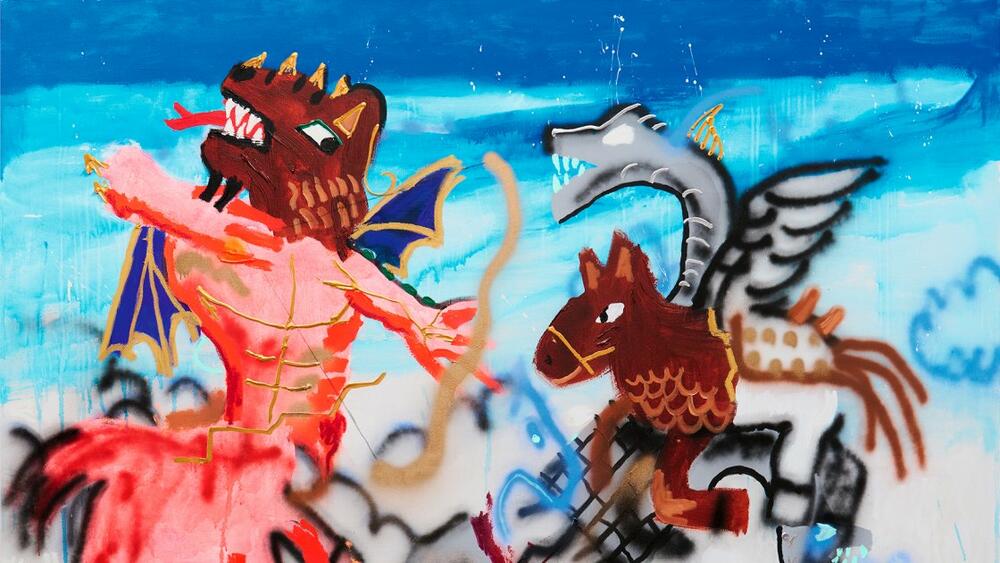
For his first monographic exhibition in a museum, the one that concerns us at Madrid's Thyssen Bornemisza, veteran curator Guillermo Solana has arranged 17 large-format works that partly summarize that incessant activity that has led the Indian to position that immediacy within, at last, the institutions. And it is so not only because of what has been analysed above, but also because of the very subject matter of the proposal, a broad contemporary and infernal bestiary that advocates leaning towards the thought of violence and the contrast of good and evil, of mythology and its agents, which may well be translated into the denunciation of colonialism or the power and terror generated. Mutilated animals, representatives of the powers that be, perhaps earthlier than imaginary, are found between the absolutism of subjugation and the elimination of balance.
Nava comments that his Hispanic influence is evident, both by root and by historical exposure to it, to which is added a Latin American devotion to that colonial revisionism and to pre-Columbian expressions. However, it would be a mistake to constantly evoke that academic side that may underlie his subconscious and to avoid the references of the experiences and the street, of that urban art and popular culture, exposed in his works through the clear zoomorphic references close to animation, the use of poor-quality materials such as acrylic spray or the urgency of the brushstroke in favour of expression. Terror and playfulness, garish colours and evident references to that wide catalogue of created and recreated beings that manage to channel anguish or terror in favour of criticism and the evolution of a perception of individual reality that, as such, broadens the limits of the influence of the vital trajectory in subjectivity and, therefore, in the overflow of expression.
-
Robert Nava _ Batalla del Olimpo (Foto Jonathan Nesteruk, cortesía Pace Gallery)
-
Robert Nava _ Batalla del Olimpo (Foto Jonathan Nesteruk, cortesía Pace Gallery)
-
Robert Nava _ El cisne de agua (Foto Jonathan Nesteruk, cortesía Pace Gallery)
-
Robert Nava _ Entre fieras nos entendemos (Foto Giorgio Benni, cortesía Pace Gallery)
-
Robert Nava _ Esta es mi casa (Foto Jonathan Nesteruk, cortesía Pace Gallery)
-
Robert Nava _ Jumanji conoce el fuego (Foto Jonathan Nesteruk, cortesía Pace Gallery)
-
Robert Nava _ Tormenta en Río Rojo (Foto Richard Gary, cortesía Pace Gallery)
Robert Nava's exhibition as part of the Small Format program can be seen until September 22, 2024 at the Museo Nacional Thyssen-Bornemisza, Paseo del Prado, 8, Madrid, Spain.
May interest you
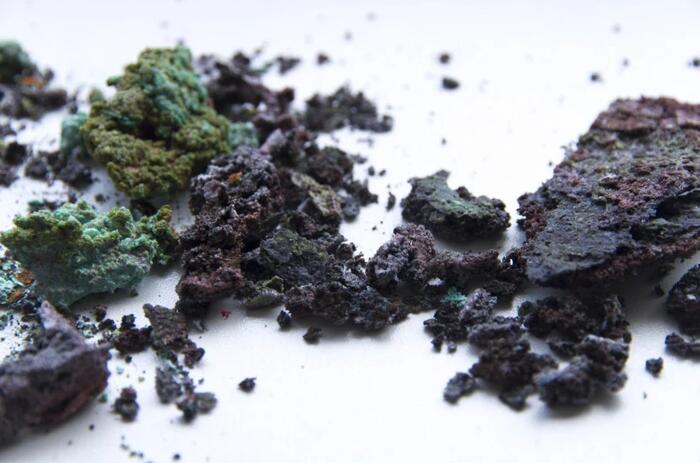
For some time now, the Inéditos program carried out by La Casa Encendida -an institution of the Montemadrid Foundation- has become a more or less reliable thermometer of the emerging curatorial scene that has Spain as its epicenter. As a result of that consolidation, within that faithful reflection, the Spanish social and artistic structure itself plays a very prominent role.
THE IBERO-AMERICAN CURATORSHIP AFTER INÉDITOS 2024
For some time now, the Inéditos program carried out by La Casa Encendida -an institution of the Montemadrid Foundation- has become a more or less reliable thermometer of the emerging curatorial scene that has Spain as its epicenter. As a result of that consolidation, within that faithful reflection, the Spanish social and artistic structure itself plays a very prominent role.

For some time now, the Inéditos program carried out by La Casa Encendida -an institution of the Montemadrid Foundation- has become a more or less reliable thermometer of the emerging curatorial scene that has Spain as its epicenter. As a result of that consolidation, within that faithful reflection, the Spanish social and artistic structure itself plays a very prominent role.
THE IBERO-AMERICAN CURATORSHIP AFTER INÉDITOS 2024
For some time now, the Inéditos program carried out by La Casa Encendida -an institution of the Montemadrid Foundation- has become a more or less reliable thermometer of the emerging curatorial scene that has Spain as its epicenter. As a result of that consolidation, within that faithful reflection, the Spanish social and artistic structure itself plays a very prominent role.
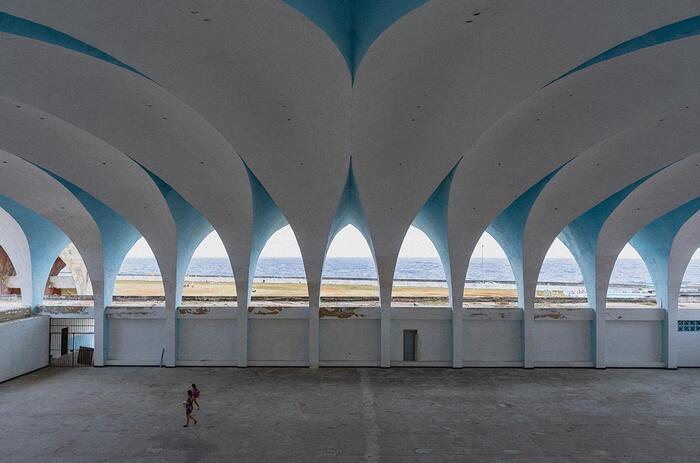
Included within the activities of the program Transcultura. Integrating Cuba, the Caribbean and the European Union through Culture and Creativity, an initiative coordinated by the European Union and implemented by UNESCO in Havana, fifteen young Caribbean photographers between the ages of 18 and 35 will participate in PHotoESPAÑA 2024 with the presentation of their recent work, in addition to being able to interact professionally with cultural agents and the sector.
YOUNG CARIBBEAN PHOTOGRAPHY AT PHOTOESPAÑA
Included within the activities of the program Transcultura. Integrating Cuba, the Caribbean and the European Union through Culture and Creativity, an initiative coordinated by the European Union and implemented by UNESCO in Havana, fifteen young Caribbean photographers between the ages of 18 and 35 will participate in PHotoESPAÑA 2024 with the presentation of their recent work, in addition to being able to interact professionally with cultural agents and the sector.

Patricio Reig (San Juan, Argentina, 1952) exhibits at the Centre Cultural La Mercè in Girona Anatomía de la mirada, a proposal that deals with the dissection of the act of looking and its individual and subjective approach.
PATRICIO REIG AND THE ANATOMY OF THE GAZE
Patricio Reig (San Juan, Argentina, 1952) exhibits at the Centre Cultural La Mercè in Girona Anatomía de la mirada, a proposal that deals with the dissection of the act of looking and its individual and subjective approach.

El Museo del Barrio presented the exhibition Amalia Mesa-Bains: Archaeology of Memory, the first retrospective exhibition by the pioneering artist, curator, and theorist. Born in 1943 to a Mexican immigrant family, Mesa-Bains has been a leading figure in Chicanx art for nearly half a century.
AMALIA MESA-BAINS: ARCHAEOLOGY OF MEMORY
El Museo del Barrio presented the exhibition Amalia Mesa-Bains: Archaeology of Memory, the first retrospective exhibition by the pioneering artist, curator, and theorist. Born in 1943 to a Mexican immigrant family, Mesa-Bains has been a leading figure in Chicanx art for nearly half a century.

It could have been an ordinary retrospective, but the decision to participate in some way in the creative process is a differential and even declarative point in Tembló acá un delirio, the exhibition that Museo CA2M in Móstoles delves into the figure, and at first hand, of Ana Gallardo (Rosario, Argentina, 1958).
ANA GALLARDO'S RECONSTRUCTION AND “DELIRIUM”
It could have been an ordinary retrospective, but the decision to participate in some way in the creative process is a differential and even declarative point in Tembló acá un delirio, the exhibition that Museo CA2M in Móstoles delves into the figure, and at first hand, of Ana Gallardo (Rosario, Argentina, 1958).

Tania Pardo (Madrid, Spain, 1976) is the new Director of the Museo Centro de Arte Dos de Mayo (CA2M Museum), the museum of contemporary art of the Community of Madrid. Pardo's career until her recent appointment has been built on a detailed work of promotion and visibility of emerging art through the curatorial actions she has developed in numerous Spanish institutions.
INTERVIEW WITH TANIA PARDO, NEW DIRECTOR OF CA2M MUSEUM
Tania Pardo (Madrid, Spain, 1976) is the new Director of the Museo Centro de Arte Dos de Mayo (CA2M Museum), the museum of contemporary art of the Community of Madrid. Pardo's career until her recent appointment has been built on a detailed work of promotion and visibility of emerging art through the curatorial actions she has developed in numerous Spanish institutions.
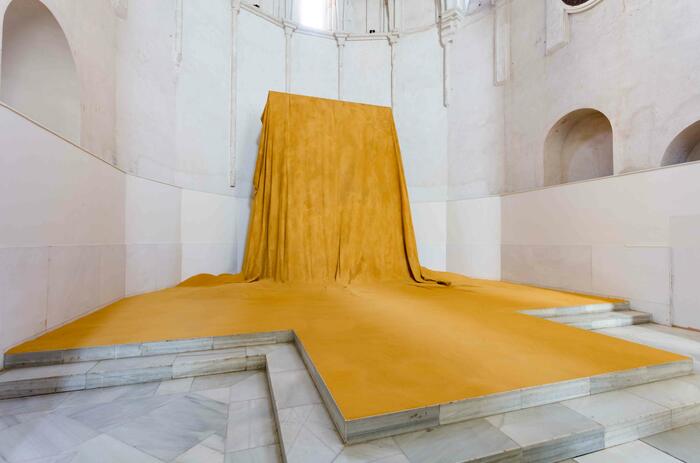
Delcy Morelos (Tierralta, Colombia, 1967) lands at the Centro Andaluz de Arte Contemporáneo (CAAC) in Seville with Profundis, an exhibition that gathers the spectacular intervention she has made ex profeso in the monumental areas of the Sevillian institution and that focuses on revitalizing the ancestral link of man with the earth, as well as capturing, through botany, the symbolism of the relations between Europe and America.
THE GERMINATION OF HISTORY ACCORDING TO DELCY MORELOS, IN SEVILLE
Delcy Morelos (Tierralta, Colombia, 1967) lands at the Centro Andaluz de Arte Contemporáneo (CAAC) in Seville with Profundis, an exhibition that gathers the spectacular intervention she has made ex profeso in the monumental areas of the Sevillian institution and that focuses on revitalizing the ancestral link of man with the earth, as well as capturing, through botany, the symbolism of the relations between Europe and America.
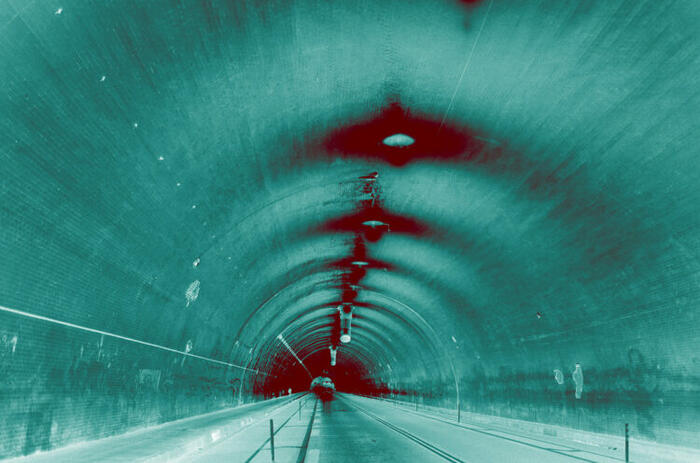
The Green Havana project is a captured sample of a time and an attitude, the same one that transits between evasion and hedonism and the social reality of the Cuban capital, a unique and referential site of that almost isolated Cuba and of a popular culture grown in the shadow of political influences.
LEANDRO FEAL AND HIS GREEN HAVANA
The Green Havana project is a captured sample of a time and an attitude, the same one that transits between evasion and hedonism and the social reality of the Cuban capital, a unique and referential site of that almost isolated Cuba and of a popular culture grown in the shadow of political influences.
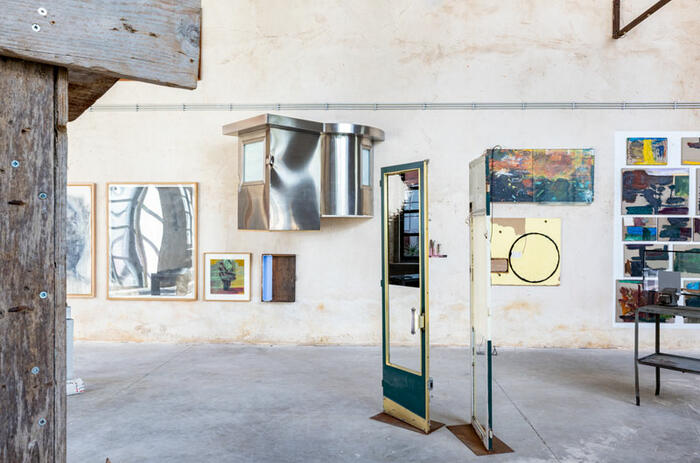
Pedro Cabrita Reis (Lisbon, Portugal, 1956) celebrates his half century of artistic production in ATELIER, a complex and complete exhibition that covers what is, perhaps, one of the most relevant proposals of the last decades that has emerged from the Portuguese plastic arts. More than 1,500 works from his personal collection fill eight pavilions of Mitra, a space donated by the Santa Casa da Misericórdia de Lisboa, located in Marvila, the same town where the artist lives and works.
ATELIER, THE HALF-CENTURY ANTHOLOGY OF CABRITA REIS
Pedro Cabrita Reis (Lisbon, Portugal, 1956) celebrates his half century of artistic production in ATELIER, a complex and complete exhibition that covers what is, perhaps, one of the most relevant proposals of the last decades that has emerged from the Portuguese plastic arts. More than 1,500 works from his personal collection fill eight pavilions of Mitra, a space donated by the Santa Casa da Misericórdia de Lisboa, located in Marvila, the same town where the artist lives and works.

For some time now, the Inéditos program carried out by La Casa Encendida -an institution of the Montemadrid Foundation- has become a more or less reliable thermometer of the emerging curatorial scene that has Spain as its epicenter. As a result of that consolidation, within that faithful reflection, the Spanish social and artistic structure itself plays a very prominent role.
THE IBERO-AMERICAN CURATORSHIP AFTER INÉDITOS 2024
For some time now, the Inéditos program carried out by La Casa Encendida -an institution of the Montemadrid Foundation- has become a more or less reliable thermometer of the emerging curatorial scene that has Spain as its epicenter. As a result of that consolidation, within that faithful reflection, the Spanish social and artistic structure itself plays a very prominent role.

Included within the activities of the program Transcultura. Integrating Cuba, the Caribbean and the European Union through Culture and Creativity, an initiative coordinated by the European Union and implemented by UNESCO in Havana, fifteen young Caribbean photographers between the ages of 18 and 35 will participate in PHotoESPAÑA 2024 with the presentation of their recent work, in addition to being able to interact professionally with cultural agents and the sector.
YOUNG CARIBBEAN PHOTOGRAPHY AT PHOTOESPAÑA
Included within the activities of the program Transcultura. Integrating Cuba, the Caribbean and the European Union through Culture and Creativity, an initiative coordinated by the European Union and implemented by UNESCO in Havana, fifteen young Caribbean photographers between the ages of 18 and 35 will participate in PHotoESPAÑA 2024 with the presentation of their recent work, in addition to being able to interact professionally with cultural agents and the sector.

Patricio Reig (San Juan, Argentina, 1952) exhibits at the Centre Cultural La Mercè in Girona Anatomía de la mirada, a proposal that deals with the dissection of the act of looking and its individual and subjective approach.
PATRICIO REIG AND THE ANATOMY OF THE GAZE
Patricio Reig (San Juan, Argentina, 1952) exhibits at the Centre Cultural La Mercè in Girona Anatomía de la mirada, a proposal that deals with the dissection of the act of looking and its individual and subjective approach.

El Museo del Barrio presented the exhibition Amalia Mesa-Bains: Archaeology of Memory, the first retrospective exhibition by the pioneering artist, curator, and theorist. Born in 1943 to a Mexican immigrant family, Mesa-Bains has been a leading figure in Chicanx art for nearly half a century.
AMALIA MESA-BAINS: ARCHAEOLOGY OF MEMORY
El Museo del Barrio presented the exhibition Amalia Mesa-Bains: Archaeology of Memory, the first retrospective exhibition by the pioneering artist, curator, and theorist. Born in 1943 to a Mexican immigrant family, Mesa-Bains has been a leading figure in Chicanx art for nearly half a century.

It could have been an ordinary retrospective, but the decision to participate in some way in the creative process is a differential and even declarative point in Tembló acá un delirio, the exhibition that Museo CA2M in Móstoles delves into the figure, and at first hand, of Ana Gallardo (Rosario, Argentina, 1958).
ANA GALLARDO'S RECONSTRUCTION AND “DELIRIUM”
It could have been an ordinary retrospective, but the decision to participate in some way in the creative process is a differential and even declarative point in Tembló acá un delirio, the exhibition that Museo CA2M in Móstoles delves into the figure, and at first hand, of Ana Gallardo (Rosario, Argentina, 1958).

Tania Pardo (Madrid, Spain, 1976) is the new Director of the Museo Centro de Arte Dos de Mayo (CA2M Museum), the museum of contemporary art of the Community of Madrid. Pardo's career until her recent appointment has been built on a detailed work of promotion and visibility of emerging art through the curatorial actions she has developed in numerous Spanish institutions.
INTERVIEW WITH TANIA PARDO, NEW DIRECTOR OF CA2M MUSEUM
Tania Pardo (Madrid, Spain, 1976) is the new Director of the Museo Centro de Arte Dos de Mayo (CA2M Museum), the museum of contemporary art of the Community of Madrid. Pardo's career until her recent appointment has been built on a detailed work of promotion and visibility of emerging art through the curatorial actions she has developed in numerous Spanish institutions.

Delcy Morelos (Tierralta, Colombia, 1967) lands at the Centro Andaluz de Arte Contemporáneo (CAAC) in Seville with Profundis, an exhibition that gathers the spectacular intervention she has made ex profeso in the monumental areas of the Sevillian institution and that focuses on revitalizing the ancestral link of man with the earth, as well as capturing, through botany, the symbolism of the relations between Europe and America.
THE GERMINATION OF HISTORY ACCORDING TO DELCY MORELOS, IN SEVILLE
Delcy Morelos (Tierralta, Colombia, 1967) lands at the Centro Andaluz de Arte Contemporáneo (CAAC) in Seville with Profundis, an exhibition that gathers the spectacular intervention she has made ex profeso in the monumental areas of the Sevillian institution and that focuses on revitalizing the ancestral link of man with the earth, as well as capturing, through botany, the symbolism of the relations between Europe and America.

The Green Havana project is a captured sample of a time and an attitude, the same one that transits between evasion and hedonism and the social reality of the Cuban capital, a unique and referential site of that almost isolated Cuba and of a popular culture grown in the shadow of political influences.
LEANDRO FEAL AND HIS GREEN HAVANA
The Green Havana project is a captured sample of a time and an attitude, the same one that transits between evasion and hedonism and the social reality of the Cuban capital, a unique and referential site of that almost isolated Cuba and of a popular culture grown in the shadow of political influences.

Pedro Cabrita Reis (Lisbon, Portugal, 1956) celebrates his half century of artistic production in ATELIER, a complex and complete exhibition that covers what is, perhaps, one of the most relevant proposals of the last decades that has emerged from the Portuguese plastic arts. More than 1,500 works from his personal collection fill eight pavilions of Mitra, a space donated by the Santa Casa da Misericórdia de Lisboa, located in Marvila, the same town where the artist lives and works.
ATELIER, THE HALF-CENTURY ANTHOLOGY OF CABRITA REIS
Pedro Cabrita Reis (Lisbon, Portugal, 1956) celebrates his half century of artistic production in ATELIER, a complex and complete exhibition that covers what is, perhaps, one of the most relevant proposals of the last decades that has emerged from the Portuguese plastic arts. More than 1,500 works from his personal collection fill eight pavilions of Mitra, a space donated by the Santa Casa da Misericórdia de Lisboa, located in Marvila, the same town where the artist lives and works.

For some time now, the Inéditos program carried out by La Casa Encendida -an institution of the Montemadrid Foundation- has become a more or less reliable thermometer of the emerging curatorial scene that has Spain as its epicenter. As a result of that consolidation, within that faithful reflection, the Spanish social and artistic structure itself plays a very prominent role.
THE IBERO-AMERICAN CURATORSHIP AFTER INÉDITOS 2024
For some time now, the Inéditos program carried out by La Casa Encendida -an institution of the Montemadrid Foundation- has become a more or less reliable thermometer of the emerging curatorial scene that has Spain as its epicenter. As a result of that consolidation, within that faithful reflection, the Spanish social and artistic structure itself plays a very prominent role.

Included within the activities of the program Transcultura. Integrating Cuba, the Caribbean and the European Union through Culture and Creativity, an initiative coordinated by the European Union and implemented by UNESCO in Havana, fifteen young Caribbean photographers between the ages of 18 and 35 will participate in PHotoESPAÑA 2024 with the presentation of their recent work, in addition to being able to interact professionally with cultural agents and the sector.
YOUNG CARIBBEAN PHOTOGRAPHY AT PHOTOESPAÑA
Included within the activities of the program Transcultura. Integrating Cuba, the Caribbean and the European Union through Culture and Creativity, an initiative coordinated by the European Union and implemented by UNESCO in Havana, fifteen young Caribbean photographers between the ages of 18 and 35 will participate in PHotoESPAÑA 2024 with the presentation of their recent work, in addition to being able to interact professionally with cultural agents and the sector.

Patricio Reig (San Juan, Argentina, 1952) exhibits at the Centre Cultural La Mercè in Girona Anatomía de la mirada, a proposal that deals with the dissection of the act of looking and its individual and subjective approach.
PATRICIO REIG AND THE ANATOMY OF THE GAZE
Patricio Reig (San Juan, Argentina, 1952) exhibits at the Centre Cultural La Mercè in Girona Anatomía de la mirada, a proposal that deals with the dissection of the act of looking and its individual and subjective approach.

El Museo del Barrio presented the exhibition Amalia Mesa-Bains: Archaeology of Memory, the first retrospective exhibition by the pioneering artist, curator, and theorist. Born in 1943 to a Mexican immigrant family, Mesa-Bains has been a leading figure in Chicanx art for nearly half a century.
AMALIA MESA-BAINS: ARCHAEOLOGY OF MEMORY
El Museo del Barrio presented the exhibition Amalia Mesa-Bains: Archaeology of Memory, the first retrospective exhibition by the pioneering artist, curator, and theorist. Born in 1943 to a Mexican immigrant family, Mesa-Bains has been a leading figure in Chicanx art for nearly half a century.

It could have been an ordinary retrospective, but the decision to participate in some way in the creative process is a differential and even declarative point in Tembló acá un delirio, the exhibition that Museo CA2M in Móstoles delves into the figure, and at first hand, of Ana Gallardo (Rosario, Argentina, 1958).
ANA GALLARDO'S RECONSTRUCTION AND “DELIRIUM”
It could have been an ordinary retrospective, but the decision to participate in some way in the creative process is a differential and even declarative point in Tembló acá un delirio, the exhibition that Museo CA2M in Móstoles delves into the figure, and at first hand, of Ana Gallardo (Rosario, Argentina, 1958).

Tania Pardo (Madrid, Spain, 1976) is the new Director of the Museo Centro de Arte Dos de Mayo (CA2M Museum), the museum of contemporary art of the Community of Madrid. Pardo's career until her recent appointment has been built on a detailed work of promotion and visibility of emerging art through the curatorial actions she has developed in numerous Spanish institutions.
INTERVIEW WITH TANIA PARDO, NEW DIRECTOR OF CA2M MUSEUM
Tania Pardo (Madrid, Spain, 1976) is the new Director of the Museo Centro de Arte Dos de Mayo (CA2M Museum), the museum of contemporary art of the Community of Madrid. Pardo's career until her recent appointment has been built on a detailed work of promotion and visibility of emerging art through the curatorial actions she has developed in numerous Spanish institutions.

Delcy Morelos (Tierralta, Colombia, 1967) lands at the Centro Andaluz de Arte Contemporáneo (CAAC) in Seville with Profundis, an exhibition that gathers the spectacular intervention she has made ex profeso in the monumental areas of the Sevillian institution and that focuses on revitalizing the ancestral link of man with the earth, as well as capturing, through botany, the symbolism of the relations between Europe and America.
THE GERMINATION OF HISTORY ACCORDING TO DELCY MORELOS, IN SEVILLE
Delcy Morelos (Tierralta, Colombia, 1967) lands at the Centro Andaluz de Arte Contemporáneo (CAAC) in Seville with Profundis, an exhibition that gathers the spectacular intervention she has made ex profeso in the monumental areas of the Sevillian institution and that focuses on revitalizing the ancestral link of man with the earth, as well as capturing, through botany, the symbolism of the relations between Europe and America.

The Green Havana project is a captured sample of a time and an attitude, the same one that transits between evasion and hedonism and the social reality of the Cuban capital, a unique and referential site of that almost isolated Cuba and of a popular culture grown in the shadow of political influences.
LEANDRO FEAL AND HIS GREEN HAVANA
The Green Havana project is a captured sample of a time and an attitude, the same one that transits between evasion and hedonism and the social reality of the Cuban capital, a unique and referential site of that almost isolated Cuba and of a popular culture grown in the shadow of political influences.

Pedro Cabrita Reis (Lisbon, Portugal, 1956) celebrates his half century of artistic production in ATELIER, a complex and complete exhibition that covers what is, perhaps, one of the most relevant proposals of the last decades that has emerged from the Portuguese plastic arts. More than 1,500 works from his personal collection fill eight pavilions of Mitra, a space donated by the Santa Casa da Misericórdia de Lisboa, located in Marvila, the same town where the artist lives and works.
ATELIER, THE HALF-CENTURY ANTHOLOGY OF CABRITA REIS
Pedro Cabrita Reis (Lisbon, Portugal, 1956) celebrates his half century of artistic production in ATELIER, a complex and complete exhibition that covers what is, perhaps, one of the most relevant proposals of the last decades that has emerged from the Portuguese plastic arts. More than 1,500 works from his personal collection fill eight pavilions of Mitra, a space donated by the Santa Casa da Misericórdia de Lisboa, located in Marvila, the same town where the artist lives and works.

For some time now, the Inéditos program carried out by La Casa Encendida -an institution of the Montemadrid Foundation- has become a more or less reliable thermometer of the emerging curatorial scene that has Spain as its epicenter. As a result of that consolidation, within that faithful reflection, the Spanish social and artistic structure itself plays a very prominent role.
THE IBERO-AMERICAN CURATORSHIP AFTER INÉDITOS 2024
For some time now, the Inéditos program carried out by La Casa Encendida -an institution of the Montemadrid Foundation- has become a more or less reliable thermometer of the emerging curatorial scene that has Spain as its epicenter. As a result of that consolidation, within that faithful reflection, the Spanish social and artistic structure itself plays a very prominent role.

Included within the activities of the program Transcultura. Integrating Cuba, the Caribbean and the European Union through Culture and Creativity, an initiative coordinated by the European Union and implemented by UNESCO in Havana, fifteen young Caribbean photographers between the ages of 18 and 35 will participate in PHotoESPAÑA 2024 with the presentation of their recent work, in addition to being able to interact professionally with cultural agents and the sector.
YOUNG CARIBBEAN PHOTOGRAPHY AT PHOTOESPAÑA
Included within the activities of the program Transcultura. Integrating Cuba, the Caribbean and the European Union through Culture and Creativity, an initiative coordinated by the European Union and implemented by UNESCO in Havana, fifteen young Caribbean photographers between the ages of 18 and 35 will participate in PHotoESPAÑA 2024 with the presentation of their recent work, in addition to being able to interact professionally with cultural agents and the sector.

Patricio Reig (San Juan, Argentina, 1952) exhibits at the Centre Cultural La Mercè in Girona Anatomía de la mirada, a proposal that deals with the dissection of the act of looking and its individual and subjective approach.
PATRICIO REIG AND THE ANATOMY OF THE GAZE
Patricio Reig (San Juan, Argentina, 1952) exhibits at the Centre Cultural La Mercè in Girona Anatomía de la mirada, a proposal that deals with the dissection of the act of looking and its individual and subjective approach.

El Museo del Barrio presented the exhibition Amalia Mesa-Bains: Archaeology of Memory, the first retrospective exhibition by the pioneering artist, curator, and theorist. Born in 1943 to a Mexican immigrant family, Mesa-Bains has been a leading figure in Chicanx art for nearly half a century.
AMALIA MESA-BAINS: ARCHAEOLOGY OF MEMORY
El Museo del Barrio presented the exhibition Amalia Mesa-Bains: Archaeology of Memory, the first retrospective exhibition by the pioneering artist, curator, and theorist. Born in 1943 to a Mexican immigrant family, Mesa-Bains has been a leading figure in Chicanx art for nearly half a century.

It could have been an ordinary retrospective, but the decision to participate in some way in the creative process is a differential and even declarative point in Tembló acá un delirio, the exhibition that Museo CA2M in Móstoles delves into the figure, and at first hand, of Ana Gallardo (Rosario, Argentina, 1958).
ANA GALLARDO'S RECONSTRUCTION AND “DELIRIUM”
It could have been an ordinary retrospective, but the decision to participate in some way in the creative process is a differential and even declarative point in Tembló acá un delirio, the exhibition that Museo CA2M in Móstoles delves into the figure, and at first hand, of Ana Gallardo (Rosario, Argentina, 1958).

Tania Pardo (Madrid, Spain, 1976) is the new Director of the Museo Centro de Arte Dos de Mayo (CA2M Museum), the museum of contemporary art of the Community of Madrid. Pardo's career until her recent appointment has been built on a detailed work of promotion and visibility of emerging art through the curatorial actions she has developed in numerous Spanish institutions.
INTERVIEW WITH TANIA PARDO, NEW DIRECTOR OF CA2M MUSEUM
Tania Pardo (Madrid, Spain, 1976) is the new Director of the Museo Centro de Arte Dos de Mayo (CA2M Museum), the museum of contemporary art of the Community of Madrid. Pardo's career until her recent appointment has been built on a detailed work of promotion and visibility of emerging art through the curatorial actions she has developed in numerous Spanish institutions.

Delcy Morelos (Tierralta, Colombia, 1967) lands at the Centro Andaluz de Arte Contemporáneo (CAAC) in Seville with Profundis, an exhibition that gathers the spectacular intervention she has made ex profeso in the monumental areas of the Sevillian institution and that focuses on revitalizing the ancestral link of man with the earth, as well as capturing, through botany, the symbolism of the relations between Europe and America.
THE GERMINATION OF HISTORY ACCORDING TO DELCY MORELOS, IN SEVILLE
Delcy Morelos (Tierralta, Colombia, 1967) lands at the Centro Andaluz de Arte Contemporáneo (CAAC) in Seville with Profundis, an exhibition that gathers the spectacular intervention she has made ex profeso in the monumental areas of the Sevillian institution and that focuses on revitalizing the ancestral link of man with the earth, as well as capturing, through botany, the symbolism of the relations between Europe and America.

The Green Havana project is a captured sample of a time and an attitude, the same one that transits between evasion and hedonism and the social reality of the Cuban capital, a unique and referential site of that almost isolated Cuba and of a popular culture grown in the shadow of political influences.
LEANDRO FEAL AND HIS GREEN HAVANA
The Green Havana project is a captured sample of a time and an attitude, the same one that transits between evasion and hedonism and the social reality of the Cuban capital, a unique and referential site of that almost isolated Cuba and of a popular culture grown in the shadow of political influences.

Pedro Cabrita Reis (Lisbon, Portugal, 1956) celebrates his half century of artistic production in ATELIER, a complex and complete exhibition that covers what is, perhaps, one of the most relevant proposals of the last decades that has emerged from the Portuguese plastic arts. More than 1,500 works from his personal collection fill eight pavilions of Mitra, a space donated by the Santa Casa da Misericórdia de Lisboa, located in Marvila, the same town where the artist lives and works.
ATELIER, THE HALF-CENTURY ANTHOLOGY OF CABRITA REIS
Pedro Cabrita Reis (Lisbon, Portugal, 1956) celebrates his half century of artistic production in ATELIER, a complex and complete exhibition that covers what is, perhaps, one of the most relevant proposals of the last decades that has emerged from the Portuguese plastic arts. More than 1,500 works from his personal collection fill eight pavilions of Mitra, a space donated by the Santa Casa da Misericórdia de Lisboa, located in Marvila, the same town where the artist lives and works.

For some time now, the Inéditos program carried out by La Casa Encendida -an institution of the Montemadrid Foundation- has become a more or less reliable thermometer of the emerging curatorial scene that has Spain as its epicenter. As a result of that consolidation, within that faithful reflection, the Spanish social and artistic structure itself plays a very prominent role.
THE IBERO-AMERICAN CURATORSHIP AFTER INÉDITOS 2024
For some time now, the Inéditos program carried out by La Casa Encendida -an institution of the Montemadrid Foundation- has become a more or less reliable thermometer of the emerging curatorial scene that has Spain as its epicenter. As a result of that consolidation, within that faithful reflection, the Spanish social and artistic structure itself plays a very prominent role.

Included within the activities of the program Transcultura. Integrating Cuba, the Caribbean and the European Union through Culture and Creativity, an initiative coordinated by the European Union and implemented by UNESCO in Havana, fifteen young Caribbean photographers between the ages of 18 and 35 will participate in PHotoESPAÑA 2024 with the presentation of their recent work, in addition to being able to interact professionally with cultural agents and the sector.
YOUNG CARIBBEAN PHOTOGRAPHY AT PHOTOESPAÑA
Included within the activities of the program Transcultura. Integrating Cuba, the Caribbean and the European Union through Culture and Creativity, an initiative coordinated by the European Union and implemented by UNESCO in Havana, fifteen young Caribbean photographers between the ages of 18 and 35 will participate in PHotoESPAÑA 2024 with the presentation of their recent work, in addition to being able to interact professionally with cultural agents and the sector.

Patricio Reig (San Juan, Argentina, 1952) exhibits at the Centre Cultural La Mercè in Girona Anatomía de la mirada, a proposal that deals with the dissection of the act of looking and its individual and subjective approach.
PATRICIO REIG AND THE ANATOMY OF THE GAZE
Patricio Reig (San Juan, Argentina, 1952) exhibits at the Centre Cultural La Mercè in Girona Anatomía de la mirada, a proposal that deals with the dissection of the act of looking and its individual and subjective approach.

El Museo del Barrio presented the exhibition Amalia Mesa-Bains: Archaeology of Memory, the first retrospective exhibition by the pioneering artist, curator, and theorist. Born in 1943 to a Mexican immigrant family, Mesa-Bains has been a leading figure in Chicanx art for nearly half a century.
AMALIA MESA-BAINS: ARCHAEOLOGY OF MEMORY
El Museo del Barrio presented the exhibition Amalia Mesa-Bains: Archaeology of Memory, the first retrospective exhibition by the pioneering artist, curator, and theorist. Born in 1943 to a Mexican immigrant family, Mesa-Bains has been a leading figure in Chicanx art for nearly half a century.

It could have been an ordinary retrospective, but the decision to participate in some way in the creative process is a differential and even declarative point in Tembló acá un delirio, the exhibition that Museo CA2M in Móstoles delves into the figure, and at first hand, of Ana Gallardo (Rosario, Argentina, 1958).
ANA GALLARDO'S RECONSTRUCTION AND “DELIRIUM”
It could have been an ordinary retrospective, but the decision to participate in some way in the creative process is a differential and even declarative point in Tembló acá un delirio, the exhibition that Museo CA2M in Móstoles delves into the figure, and at first hand, of Ana Gallardo (Rosario, Argentina, 1958).

Tania Pardo (Madrid, Spain, 1976) is the new Director of the Museo Centro de Arte Dos de Mayo (CA2M Museum), the museum of contemporary art of the Community of Madrid. Pardo's career until her recent appointment has been built on a detailed work of promotion and visibility of emerging art through the curatorial actions she has developed in numerous Spanish institutions.
INTERVIEW WITH TANIA PARDO, NEW DIRECTOR OF CA2M MUSEUM
Tania Pardo (Madrid, Spain, 1976) is the new Director of the Museo Centro de Arte Dos de Mayo (CA2M Museum), the museum of contemporary art of the Community of Madrid. Pardo's career until her recent appointment has been built on a detailed work of promotion and visibility of emerging art through the curatorial actions she has developed in numerous Spanish institutions.

Delcy Morelos (Tierralta, Colombia, 1967) lands at the Centro Andaluz de Arte Contemporáneo (CAAC) in Seville with Profundis, an exhibition that gathers the spectacular intervention she has made ex profeso in the monumental areas of the Sevillian institution and that focuses on revitalizing the ancestral link of man with the earth, as well as capturing, through botany, the symbolism of the relations between Europe and America.
THE GERMINATION OF HISTORY ACCORDING TO DELCY MORELOS, IN SEVILLE
Delcy Morelos (Tierralta, Colombia, 1967) lands at the Centro Andaluz de Arte Contemporáneo (CAAC) in Seville with Profundis, an exhibition that gathers the spectacular intervention she has made ex profeso in the monumental areas of the Sevillian institution and that focuses on revitalizing the ancestral link of man with the earth, as well as capturing, through botany, the symbolism of the relations between Europe and America.

The Green Havana project is a captured sample of a time and an attitude, the same one that transits between evasion and hedonism and the social reality of the Cuban capital, a unique and referential site of that almost isolated Cuba and of a popular culture grown in the shadow of political influences.
LEANDRO FEAL AND HIS GREEN HAVANA
The Green Havana project is a captured sample of a time and an attitude, the same one that transits between evasion and hedonism and the social reality of the Cuban capital, a unique and referential site of that almost isolated Cuba and of a popular culture grown in the shadow of political influences.

Pedro Cabrita Reis (Lisbon, Portugal, 1956) celebrates his half century of artistic production in ATELIER, a complex and complete exhibition that covers what is, perhaps, one of the most relevant proposals of the last decades that has emerged from the Portuguese plastic arts. More than 1,500 works from his personal collection fill eight pavilions of Mitra, a space donated by the Santa Casa da Misericórdia de Lisboa, located in Marvila, the same town where the artist lives and works.
ATELIER, THE HALF-CENTURY ANTHOLOGY OF CABRITA REIS
Pedro Cabrita Reis (Lisbon, Portugal, 1956) celebrates his half century of artistic production in ATELIER, a complex and complete exhibition that covers what is, perhaps, one of the most relevant proposals of the last decades that has emerged from the Portuguese plastic arts. More than 1,500 works from his personal collection fill eight pavilions of Mitra, a space donated by the Santa Casa da Misericórdia de Lisboa, located in Marvila, the same town where the artist lives and works.

